Boston Children's Museum
308 Congress Street, Boston, MA 02210
617-426-6500
© Boston Children’s Museum 2025
Website Design by Jackrabbit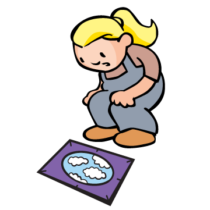
Some of the most important tools that scientists use are the simplest ones. By giving children a chance to make the tools that they will use, they can gain insight into how these instruments work and can then investigate the world around them. In this activity, children will create what has to be the simplest scientific instrument of all – a tool called a nephoscope that helps scientists determine the direction that clouds are moving, which also tells them the direction that the wind is blowing above them.
VIEW ACTIVITY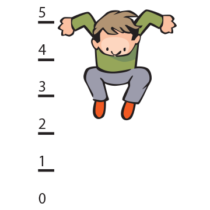
Gravity is an important scientific concept, but one that is difficult to grasp, even for adults. Having children use their own bodies to test gravity, and then compare how they would fare against gravity on another celestial body provides a great jumping off point for understanding that the effects of gravity are different in different parts of our solar system.
VIEW ACTIVITY
When we look up at the Moon, we see that it is pock marked with countless craters. We have craters here on Earth, too (though many fewer). It is these craters, along with some of the geological activity of the Moon from a long time ago, that makes those distinct patterns on the Moon’s surface that different cultures equate to a “man in the Moon”, or a “rabbit in the Moon.” Studying the process by which these craters came to be is not only good learning…it is a lot of fun too. In playing around with making their own little craters, children practice experimenting, measuring, isolating variables, and more.
VIEW ACTIVITY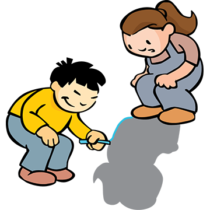
When we look up at the sky, it seems as though the sun moves across it throughout the day. This apparent movement of the sun across the sky is predictable, and can make observations about the sun by noting the relationship between its position in the sky and the shadows it creates on Earth. You even can tell approximately what time of day it is by observing the sun’s position in the sky. But that apparent motion can also lead to some confusion – is the sun moving across the sky, or is the Earth moving? Simple investigations like this one can provide early concrete connections to the sun, and a beginning understanding of the relationship between the sun and the Earth.
VIEW ACTIVITY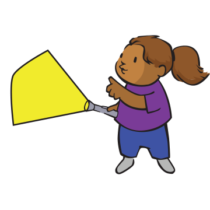
This activity is a great introduction to both the behaviors of light and the properties of materials, and as a result works particularly well with your youngest children. Building a foundational understanding of how light behaves is central to astronomy and other sciences, and this foundation is best built through direct experiences like these.
VIEW ACTIVITY
There are a whole host of skills that children use when making discoveries – problem solving, using tools, communicating, and many more. But few skills are as important to a child’s developing understanding of their world as being a good observer. Science, engineering, art, cultural understanding, and many more disciplines rely on observation. When you give children an opportunity to really look at the world around them, and note the things that are changing or remaining constant, you give them the chance to develop and grow into good observers.
VIEW ACTIVITY
Constellations are pictures that people have imagined in the patterns of the stars, and they are familiar in some form or another to most children. It’s also fun to look for them at night…but why wait until night time? Creating homemade projections of these constellations is a fun way to connect to astronomy, and to engage in some basic problem solving and even practice some math. This activity is a good follow-up to Constellation Creation, from this curriculum.
VIEW ACTIVITY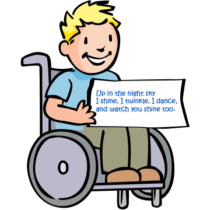
Looking up at the sky has inspired scientists, artists, musicians, poets, writers, and cultures around the world for thousands of years. Few things are as universally stirring, and while cultures and landscapes may vary around the world, the sky above us unites us all and finds expression in many forms. One of these forms is haiku, which is not only a low-barrier introduction to elements of poetry like form, sound, meter, mood, dominant impression, and more; it is also a way to connect with the science of “looking up”, to build vocabulary, and to learn more about a tradition from another culture.
VIEW ACTIVITY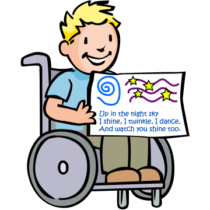
Looking up at the sky has inspired scientists, artists, musicians, poets, writers, and cultures around the world for thousands of years. Few things are as universally stirring, and while cultures and landscapes may vary around the world, the sky above us unites us all and finds expression in many forms. One of these forms of expression is haiga, which is a companion art form to haiku. Haiga paintings are inspired by listening to haiku poems. Try this activity after doing the Sky Haiku activity from this curriculum, and give your students another chance to reflect on the sky and the universe through art.
VIEW ACTIVITY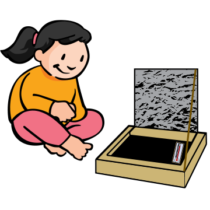
Most of the energy we consume comes, in some form or another, from the Sun, and the Sunlight we experience here on Earth contains a surprisingly large amount of energy. But children might not realize it based on the calm, pleasing warmth the Sun’s rays impart. In this activity students investigate just how much the energy found in Sunlight can do, if properly harnessed.
VIEW ACTIVITY